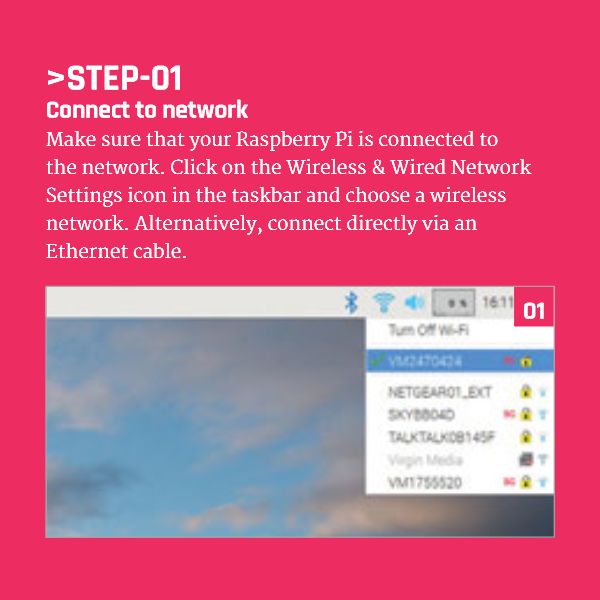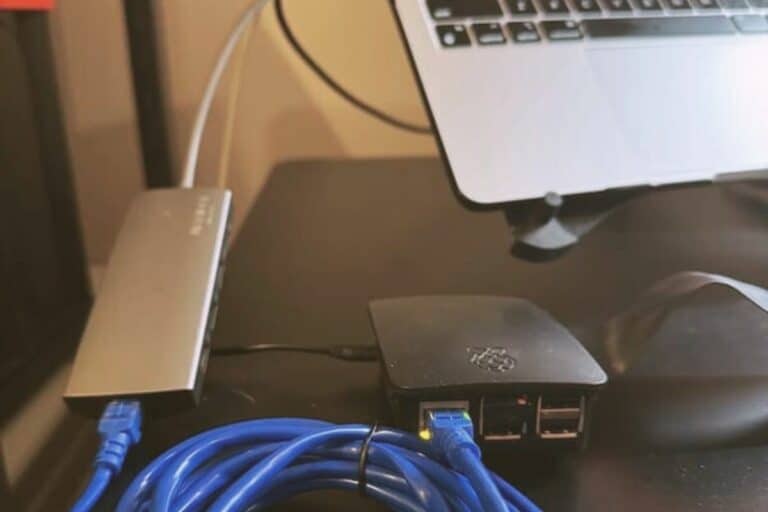How To Connect To Raspberry Pi Outside Your Network: A Simple Guide
Hey there, tech enthusiasts! If you've ever found yourself scratching your head wondering how to access your Raspberry Pi from outside your local network, you're definitely not alone. In today’s interconnected world, knowing how to connect to Raspberry Pi outside network has become a must-have skill for hobbyists, developers, and even casual users. Whether you're managing a home automation system, running a remote server, or just tinkering around with cool projects, this guide will walk you through everything you need to know. So, grab your favorite drink and let’s dive in!
Connecting to your Raspberry Pi from outside your network might sound complicated, but trust me, it’s way easier than you think. With the right setup and a few simple steps, you can control your Pi from anywhere in the world. In this article, we’ll explore the ins and outs of remote Raspberry Pi access, including the tools, methods, and best practices to keep your connection secure and reliable.
Before we get into the nitty-gritty, let’s quickly set the stage. This guide assumes you already have a Raspberry Pi up and running on your local network. If you haven’t set it up yet, don’t worry—we’ll include some helpful links to get you started. Now, let’s move on to the main event: how to connect to Raspberry Pi outside your network like a pro!
Read also:Kono Koi Ni Kizuite A Deep Dive Into The Animes Themes Characters And Legacy
Why Connect to Raspberry Pi Outside Network?
First things first, why would you even want to connect to your Raspberry Pi from outside your local network? Well, the answer is simple: convenience and flexibility. Imagine being able to monitor your home security cameras, check on your server status, or control your smart home devices while you're at work or on vacation. Sounds pretty cool, right?
Here are a few practical use cases:
- Remote monitoring of IoT devices
- Accessing files stored on your Raspberry Pi
- Managing a home server or web application
- Controlling smart home systems remotely
By setting up remote access, you can stay connected to your projects no matter where you are. But how exactly do you make it happen? That’s what we’re here to figure out!
Understanding the Basics: How It Works
Before we jump into the methods, let’s break down the basics of connecting to Raspberry Pi outside network. At its core, this process involves creating a secure tunnel between your Raspberry Pi and your external device. Think of it like building a private bridge that allows data to flow between your Pi and your computer, phone, or tablet—even when they’re on different networks.
What You’ll Need
To get started, make sure you have the following:
- A Raspberry Pi with Raspbian (or any compatible OS) installed
- A stable internet connection for both your Pi and your external device
- A static IP address or dynamic DNS (DDNS) service for your Pi
- A basic understanding of SSH and port forwarding
Don’t worry if some of these terms sound unfamiliar—we’ll explain them in detail as we go along. For now, just focus on getting your Pi set up and connected to your local network.
Read also:How To Consulta Si Eres Miembro De Mesa 2024 A Comprehensive Guide
Method 1: Using SSH for Remote Access
SSH (Secure Shell) is one of the most popular methods for connecting to Raspberry Pi outside network. It’s secure, reliable, and relatively easy to set up. Here’s how you can get started:
Step 1: Enable SSH on Your Raspberry Pi
To enable SSH on your Pi, follow these steps:
- Open the Raspberry Pi Configuration tool by typing
sudo raspi-configin the terminal - Navigate to "Interfacing Options" and select "SSH"
- Choose "Yes" to enable SSH
- Reboot your Pi using
sudo reboot
Once SSH is enabled, you’ll be able to connect to your Pi using its local IP address. But how do you access it from outside your network? That’s where the next steps come in.
Step 2: Set Up Port Forwarding
Port forwarding allows you to direct incoming traffic from the internet to your Raspberry Pi. Here’s how to set it up:
- Log in to your router’s admin panel (usually at
192.168.0.1or192.168.1.1) - Find the "Port Forwarding" or "Virtual Servers" section
- Create a new rule to forward port 22 (the default SSH port) to your Pi’s local IP address
Remember to note down your router’s public IP address, as you’ll need it to connect from outside your network.
Method 2: Using Dynamic DNS (DDNS)
Public IP addresses can change over time, which makes it tricky to connect to your Pi consistently. That’s where Dynamic DNS (DDNS) comes in. DDNS services assign a static domain name to your router, so you can always reach your Pi using the same address.
Popular DDNS Services
Here are some of the best DDNS services you can use:
- No-IP
- DuckDNS
- DDNS.net
Most of these services offer free plans that are perfect for hobbyists. Just sign up, configure your router, and you’re good to go!
Method 3: Using a Third-Party Service
If setting up SSH and DDNS feels like too much work, you can always use a third-party service to simplify the process. Tools like ngrok and PageKite make it easy to create secure tunnels to your Raspberry Pi without the hassle of configuring your router.
Using ngrok
ngrok is a popular tool for creating temporary tunnels to your Pi. Here’s how to use it:
- Download ngrok from their official website
- Run the command
./ngrok tcp 22to create a tunnel for SSH - Use the generated ngrok address to connect to your Pi
While ngrok is great for quick testing, it’s not ideal for long-term use due to its temporary nature.
Security Tips for Remote Raspberry Pi Access
When connecting to Raspberry Pi outside network, security should always be a top priority. Here are a few tips to keep your Pi safe:
- Change the default SSH port (22) to something less common
- Use strong passwords or SSH keys for authentication
- Enable a firewall to block unauthorized access
- Regularly update your Pi’s software to patch vulnerabilities
By following these best practices, you can enjoy the convenience of remote access without compromising your security.
Troubleshooting Common Issues
Even with the best setup, things can sometimes go wrong. Here are some common issues you might encounter and how to fix them:
Issue 1: Unable to Connect via SSH
If you can’t connect to your Pi via SSH, double-check the following:
- Your Pi’s IP address and port number
- Your router’s port forwarding settings
- Your firewall rules
Issue 2: DDNS Not Updating
If your DDNS service isn’t updating properly, try the following:
- Ensure your router supports DDNS and is configured correctly
- Run a DDNS client on your Pi to force updates
With a little troubleshooting, you’ll be back up and running in no time!
Advanced Techniques for Power Users
If you’re ready to take your Raspberry Pi setup to the next level, here are a few advanced techniques to explore:
Using a Reverse SSH Tunnel
A reverse SSH tunnel allows you to connect to your Pi even if it’s behind a firewall or NAT. Here’s how to set it up:
- On your remote server, run
ssh -R 2222:localhost:22 user@pi-address - Connect to your Pi using
ssh -p 2222 user@localhost
This method is especially useful for accessing your Pi from behind restrictive networks.
Conclusion: Take Control of Your Raspberry Pi Anywhere
And there you have it—a comprehensive guide to connecting to Raspberry Pi outside network. Whether you choose SSH, DDNS, or a third-party service, the key is to find a method that works for your needs and skill level. Remember to prioritize security and keep your setup updated to avoid any potential issues.
So, what are you waiting for? Go ahead and try out these methods, and let us know how it goes in the comments below. If you found this guide helpful, don’t forget to share it with your friends and fellow Raspberry Pi enthusiasts. Happy tinkering, and see you in the next article!
Table of Contents
- Why Connect to Raspberry Pi Outside Network?
- Understanding the Basics: How It Works
- Method 1: Using SSH for Remote Access
- Method 2: Using Dynamic DNS (DDNS)
- Method 3: Using a Third-Party Service
- Security Tips for Remote Raspberry Pi Access
- Troubleshooting Common Issues
- Advanced Techniques for Power Users
- Conclusion: Take Control of Your Raspberry Pi Anywhere


